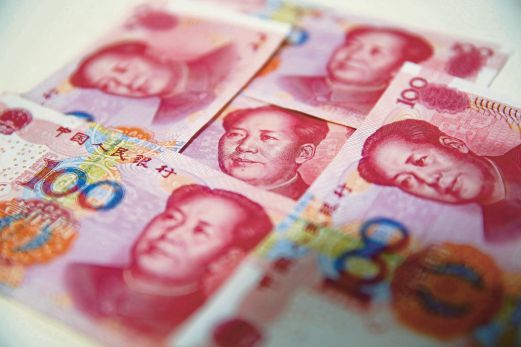CHINA’S currency devaluation bombshell last week blew apart the growing consensus that global inflation had bottomed out and was slowly moving higher, forcing investors to reconsider their assumptions on a wide range of financial markets.
The devaluation of the yuan makes China’s goods cheaper in world markets, a deflationary impulse that comes just as the Chinese and other emerging economies are slowing and commodity prices falling to the lowest level in years.
The two per cent one-off devaluation on Tuesday and subsequent one per cent fall in the yuan aren’t big in themselves, but further depreciation might be.
What has really unnerved markets, however, is the fear that central banks around the world could be hamstrung by persistently weak inflation and unable to counter growth or financial shocks that might be coming down the road.
“As China cuts the selling price of exports and as emerging market countries face new perils, the failure of the world’s central bankers to reflate their economies will be the dominant force in markets,” said Russell Napier, an independent investment strategist.
“The investment lessons are clear: get long cash, in general, and get long dollars, in particular.”
On Thursday, the break-even rate on 10-year United States Treasury inflation-protected bonds, essentially a measure of where investors expect inflation to be over the next decade, fell to 1.59 per cent, the lowest since January.
The eurozone one-year inflation swap rate, a market-based measure of inflation expectations over the next 12 months, fell to 11 basis points on Thursday. It was around 100 basis points in June and 25 basis points the week before last week.
The scale of the decline last week is significant because it takes the rate back below where it was on March 9, when the European Central Bank began its €1 trillion bond-buying “quantitative easing” programme to ward off deflation.
The latest US and United Kingdom inflation figures will be released this week. They are for last month, when oil prices plunged 20 per cent and Chinese stocks slumped 14 per cent, powerful deflationary forces compounded by last week’s devaluation.
Advertisement
Even if they don’t fully capture the latest shifts, upcoming measures will. Economists at Barclays on Thursday lowered their outlook for US inflation out to the end of next year from their previous forecasts a month ago.
“Since then, energy futures prices have moved sharply lower as the price of crude oil has plummeted,” they said in a note to clients on Thursday.
“The seasonally adjusted energy component of the consumer price index will drag on monthly headline consumer price index readings through the first quarter of next year.”
Dragon losing its fire
Stocks, commodities, emerging market currencies and the yields on safe-haven government bonds fell last week, too, in some cases, to levels and by magnitudes not seen in years. Germany’s two-year bond yield hit a record low of -0.29 per cent.
The solid and widely held belief only a few months ago, that the Federal Reserve would raise US interest rates next month and that the Bank of England would follow shortly after, has been chipped away.
This unexpected shift in the global policy and inflationary landscape prompted some of the world’s biggest currency players to change their forecasts, mostly for key Asian exchange rates.
Bank of America Merrill Lynch (BAML) was among several investment banks to say Beijing’s move represents a fundamental, secular shift that will prompt a “regime change” in Asian currency rates.
It expects the yuan itself to fall as much as 10 per cent by the end of next year, the Indonesian rupiah to lose 8.7 per cent, the Malaysian ringgit, 6.2 per cent, and the Korean won, five per cent.
“The unprecedented events over the past three days... will have far-reaching consequences for Asia,” BAML’s Asia strategists wrote in a note on Thursday.
Many analysts say China’s devaluation is the latest salvo in the global “currency wars”, in which competing countries explicitly or implicitly weaken their exchange rates to boost exports, that have intensified in recent years.
As interest rates have fallen to zero in some developed economies and money printing has proliferated, the exchange-rate policy has become one of the few remaining levers to stimulate business activity and, in some cases, avoid deflation.
French bank Societe Generale said Beijing’s move represented a “tectonic” shift and raised concerns over the outlook for European stocks exposed to the slowing Chinese economy.
Its “dragon basket” of European stocks with a high sensitivity to China, such as automobile, luxury goods and resource-sector stocks, is down 11 per cent this year relative to the broader market and vulnerable to “further underperformance”.
“The yuan is weakening and global markets are shaking,” the bank’s equity strategists said on Thursday.
The writer is a Reuters journalist





